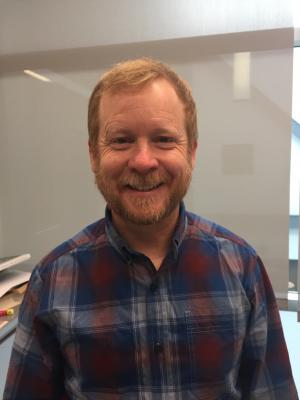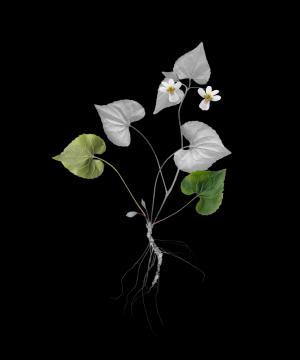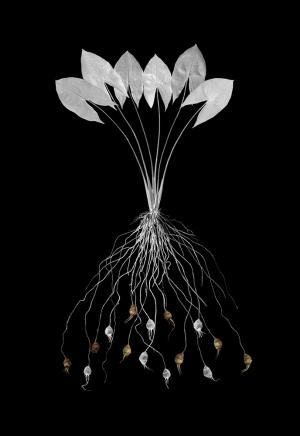Jimmy Fike is kind of a big deal.
Estrella Mountain Community College’s (EMCC) only residential art faculty’s photos were recently featured in The Washington Post.
The photos were taken from his edible plants series, something he started about 10 years ago after feeling like he’d hit a limitation with the type of landscape photography he was doing.
“It seemed to be pretty derivative and really beholden to either the romantic tradition in art or kind of a newer tradition, which is the new topographics, and both of those seemed a little bit played out to me,” he said. “So I sat down and did a lot of reading, a lot of thinking, and came up with this new list of critical criteria that I wanted to engage with.”
He said he wanted to create art that could effect change and promote connection; that was interdisciplinary, and emphasized ecology over the aesthetic of landscapes.
“I was kind of stewing on all those variables and this idea just emerged out of that,” he said.
Fike said the photography bug bit him when he was an undergraduate student in the early ’90s at Auburn University in his home state of Alabama.
“I was studying art and taking a lot of different types of studio art classes — drawing, painting, design — and then when I took a photo class, it just really sparked something in me,” he said.
That was back when everyone was shooting on film, a class Fike still teaches today.
“I still teach a film class here,” he said. “I like teaching that a lot.”
Out in the field, Fike uses a digital camera, but it’s not his most important tool.
“Photoshop is where it’s at with my work,” he said, explaining he spends more time in the Adobe imaging program than behind the camera.
Fike photographs edible plants and then takes those photos into Photoshop where the real work begins. He highlights the edible portion of the plant in color while the rest of the plant is turned to black and white. Every plant is featured on a completely black background.
Fike has photographed about 140 plants in some 15 different states, mostly through artist residencies.
“It’s pretty common in the summer that I go and do a month-long residency somewhere,” he said.
He said one of the perks of the edible plants series is that he gets to spend time outside.
“I get to hike,” he said.
Submitting his work
Fike submitted about 10 pieces from his edible plants series this fall to the Washington Post’s photography blog In Sight, which has an open submission policy.
“I just went for it, why not?” he said. “It just hit. Dee Swan is the photo editor there, and something about my work appealed to her and she said, ‘Let’s do it,’ so I was tickled pink.”
Swan said Fike’s submission was unique in that the subject matter and technique was something The Washington Post hadn’t seen before.
“I was moved by his innovative approach to photographing and Photoshopping his subjects, including his selective use of color and the composition of the plants,” she said. “His renditions of the edible plants were life-like and beautiful. It was an easy decision for us to choose to publish his work.”
Fike said being featured in The Washington Post is one of the greatest things that’s happened in his art career so far.
“That’s really great exposure,” he said. “It’s one of the best photo blogs in the world.”
Fike will get even more exposure this spring when his edible plants series is featured in a solo show at Brown University in Rhode Island.
“It’s one of the biggest exhibitions I’ve ever had,” said the man whose artwork has been in more than 70 exhibitions across the nation.
His work is also in permanent collections of the University of Alabama at Birmingham and the George Eastman House International Museum of Photography and Film.
The Brown University show will run a few months and feature about 20 images.
Seeing EMCC’s art program grow
Fike has been at EMCC for nine years, and said he has seen the art program grow substantially over that time.
“When I got here, they just had two classrooms and just a few course offerings,” he said.
Now, the school has four classrooms and offers 15 classes per semester.
“It’s really grown, and it’s really thriving, and it’s working,” Fike said.
Fike will teach Color, Photography I, Introduction to Digital Photography, and The Portfolio this spring.
To read the Washington Post story, click here


